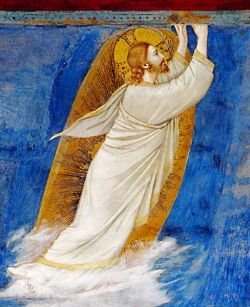The transcendence of the otherness
Warning: Invalid argument supplied for foreach() in /home/monast59/public_html/templates/yoo_moustache/styles/bose-home/layouts/article.php on line 44
The mystery confessing Christ as next to God and present in history and inside all men teaches us the transcendence of the other: the other’s face
Jesus’ resurrection from the dead is his glorification, his exodus into the glory of God, his going to the Father who called him back from the dead in the power of the Holy Spirit. The resurrected Jesus is to be looked for where the Father is because by means of his resurrection the full divinization of his flesh and mission happened.
It is for this reason that neither the Gospel according to Matthew, nor the one according to John narrate Jesus’ ascension into heaven as a particular event, whereas Luke shows the ascension as the seal which puts an end to Jesus’ Easter apparitions. Forty days later — a symbolic number hinting at a concluded time, a time of wait and transition — Jesus manifested himself revealing his ascension to heaven, his new dwelling, his invisible presence in God. Is then Jesus’ ascension an abstraction, a separation from his disciples and community, or is it the revelation of a new relationship binding the resurrected Jesus to those who saw, heard and touched him (1 John 1:1) till they believed he is the Messiah, the one sent by God, the Son of God?
